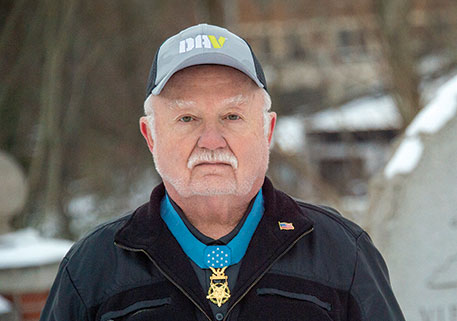 VA launches National Women Veterans Oncology System of Excellence
VA launches National Women Veterans Oncology System of Excellence
Over the past several years, studies have shown a significantly higher rate of certain cancers within veteran populations than nonveterans—among them, breast cancer. According to the Department of Veterans Affairs, an estimated 700 women veterans enrolled in VA health care are diagnosed with breast cancer each year.
To address this need, the VA announced in October the establishment of the National Women Veterans Oncology System of Excellence in partnership with Duke and Baylor universities, as a means of leveraging a broad network of clinical knowledge and research to provide women veterans across the nation access to state-of-the-art oncology care and clinical trials.
The women veteran population is growing, and as such, more cases of breast cancer—and other cancers unique to women—are likely to be diagnosed. The VA has made strides in its prevention program, including leading the nation in rates for mammography and instituting breast exam training programs for VA physicians who may not typically see many female patients, but the challenge in treating cancer often lies in proximity to the medical facility.
“We have a number of medical centers, and 48 of those medical centers are associated with [National Cancer Institute] comprehensive cancer centers, but that still is not a big enough network to cover the entire country,” said Dr. Michael J. Kelley, director of the VA’s national oncology program and professor of medicine at Duke University. “So now we’re switching from this concept of Centers of Excellence—or hubs—to a System of Excellence.”
This model follows what the VA has already launched for lung and prostate cancers, two other top cancer diagnoses among veterans. Plans are to develop national tumor boards; improve veterans’ access to clinical trials; prioritize co-recruiting efforts; and begin new joint research programs to improve and transform cancer prevention, treatment and overall health outcomes. It relies on programs like teleoncology (the application of telemedicine to oncology) to increase access to care wherever a patient is located, even if the physician is states away from the veteran.
“Every veteran will have access to cutting-edge oncology care that will be delivered as close to them geographically as possible,” said Kelley.
Advancing cancer research is a key focus of the partnership. The VA’s National Precision Oncology Program, which launched in 2016 and uses samples of tumors to look at a patient’s genetic profile and create a targeted treatment approach, grew out of such research and testing. At the Baylor College of Medicine, teams have recently launched a study using artificial intelligence imaging systems to help surgeons make better assessments about the removal of breast tumors, which could help reduce the need for further surgeries due to recurrence.
“One of the big problems in breast cancer surgery is that, in about 1 in 4 women on whom we do a lumpectomy to remove cancer, we fail to get clear margins,” Dr. Alastair Thompson, a surgical oncologist and Baylor professor, said in a statement. “Hence the need for a good, effective and user-friendly tool to help us better identify if we have adequately removed the breast cancer from a woman’s breast, to get it right the first time.”
Baylor researchers are also currently looking at ways to screen Food and Drug Administration-approved compounds to treat cancer in ways that are faster and less costly than traditional drug development strategies, as well as using lab testing to explore the causes behind racial and ethnic health disparities in breast cancer.
And while the primary focus of this partnership is on women’s health, men are not immune from breast cancer—especially male veterans, who have higher rates of the disease as well.
“It’s interesting that the VA has a significant fraction of all the men that have breast cancer, and it then actually presents an opportunity perhaps to test some hypotheses, new treatments or new approaches to treating men with breast cancer that may be different in a population that you wouldn’t ordinarily be able to approach because there just aren’t enough men in one system, but now there may be in our system,” said Dr. Rola El-Serag, Baylor assistant professor and medical director of the Women’s Health Program at the Houston VA Medical Center.
According to the Armed Forces Health Surveillance Center, 874 military women were diagnosed with breast cancer between 2000 and 2011—slightly more than the number of U.S. women wounded in Iraq and Afghanistan over that period. While it’s unclear what characteristics these tumors had, a University of Michigan study found that among a group of more than 62,000 patients who were diagnosed with estrogen receptor-positive breast cancer, the risk for spread was between 10% and 40% for recurrence over a 15-year period, even after being deemed cancer-free following a course of treatment.
“The women serving today are the ones who will be sitting in VA exam rooms in the coming decades, and they will carry with them an entire medical history of illness and injury,” said National Legislative Director Joy Ilem. “The VA must be prepared to help the growing number of women veterans diagnosed with breast cancer get the best care possible, so this System of Excellence partnership really comes at a crucial moment.”
“[The VA does] have hubs around the nation where we are providing outstanding state-of-the-art care for breast cancer,” said El-Serag. “Part of establishing this network is really for us at the centers to be able to share these practices and guide other facilities around the nation, along with our community partners, to standardize the care so that all of our female veterans are receiving excellent care.”






